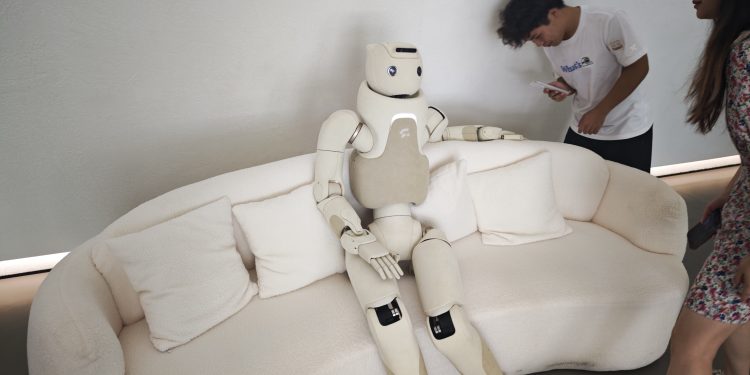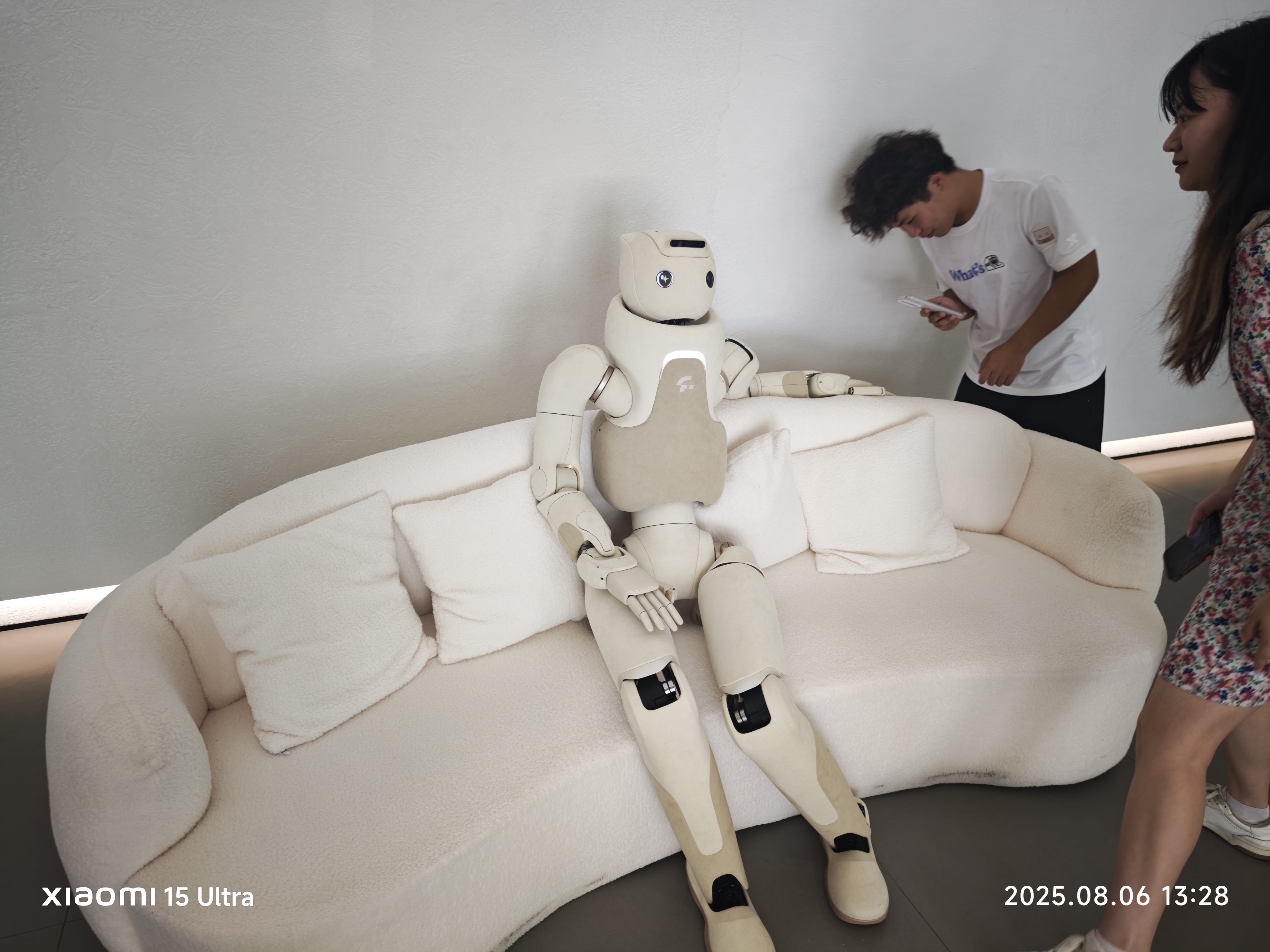Fourier GR-3 Humanoid Robot
AsianFin – Fourier Intelligence has introduced its most advanced humanoid robot to date—the GR-3, a full-sized AI-powered care-bot designed to enhance interactive companionship and human-robot emotional connection.
The launch marks a major leap for the Shanghai-based robotics firm, positioning it at the forefront of the global humanoid robotics race.
Unveiled in Beijing on Tuesday, the GR-3 is the third generation of Fourier’s GRx humanoid series and the first tailored explicitly for social care. It features 55 degrees of freedom, a compact modular design, and a dual hot-swappable battery system allowing up to 3 hours of continuous runtime without powering down—a key advantage in uninterrupted service environments such as hospitals and eldercare institutions.
Standing 165 cm tall and weighing 71 kg, the GR-3 emphasizes “affinity” and “a sense of security,” aiming to redefine the human-robot relationship. It comes equipped with Fourier’s proprietary full-sensory interaction system, integrating auditory, visual, and tactile inputs to deliver more nuanced emotional feedback. A novel attention management systemorchestrates these inputs to enable more natural, responsive engagement.
“In the past year, the industry has advanced at a pace equivalent to three to five years’ worth of progress,” said Gu Jie, founder and CEO of Fourier, during a post-launch briefing. “GR-3 is not just a machine—it is a companion. It represents a new standard in how robots can coexist and connect with humans.”
Founded in 2015 and headquartered in Shanghai’s Zhangjiang Hi-Tech Park, Fourier Intelligence has evolved from a rehabilitation robotics pioneer into a general-purpose robotics company with global R&D and manufacturing reach. Its core rehabilitation products are deployed in over 2,000 institutions across more than 40 countries. In 2023, overseas revenue from its rehab division surged more than 50%, accounting for about 10% of total revenue.
Fourier’s march toward full-stack humanoid robotics began with its lower-limb exoskeleton in 2017, followed by the GR-1 humanoid in 2023, which became China’s first humanoid robot to reach mass production. In 2024, the company released GR-2 with enhanced mobility and doubled battery life. By early 2025, Fourier launched China’s first verified open-source humanoid robot, the Fourier N1, and closed a Series E funding round worth nearly 800 million yuan (~$110 million), backed by top investors including Guoxin Investment and Prosperity7.
Beyond physical capability, the GR-3 brings a new level of emotional intelligence. It responds through a dual-path feedback mechanism: quick reflexes for simple actions—such as turning its head when called—and more complex, contextual responses driven by large AI models for repeated or nuanced interactions.
The robot’s redesigned development framework, built on a server-client architecture, caters to both industrial and academic developers. This upgrade enables rapid deployment across various use cases, from eldercare and rehabilitation training to guided tours and industrial assistance.
While not yet positioned for the consumer market, the GR-3—priced above 200,000 yuan ($27,500)—is targeting B2B sectors such as healthcare institutions and enterprise clients.
“We are still in the early days of household adoption, but for hospitals, community centers, and public-facing roles, the technology is already mature,” Gu said. “What matters most now is not how we sell the robots—but how well we solve real-world pain points.”
Fourier’s broader vision is to develop interactive APIs for scenario developers, enabling personalized robot deployments and lowering technical barriers. The company hopes to shape a future where robots not only assist with tasks but also foster emotional connections—especially in aging societies.
Gu also emphasized that while manufacturing costs remain high due to component complexity, scaling production will drive costs down over time. Still, he warned that price will ultimately be determined by how well a product meets end-user needs and integrates into operational environments.
Looking ahead, the GR-3 serves as a platform for further exploration into assisted care, with future updates expected to deepen its ability to interpret and respond to human needs in intimate and dynamic settings.
“The brain may be humanity’s final frontier—but we believe robots will be the bridge,” Gu said. “GR-3 is the next step in that journey.”
更多精彩内容,关注钛媒体微信号 (ID:taimeiti),或者下载钛媒体 App























